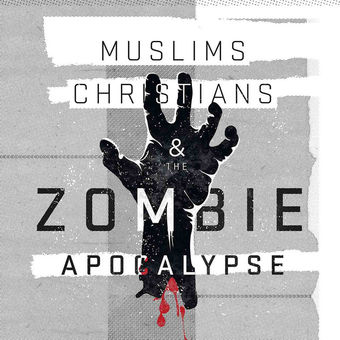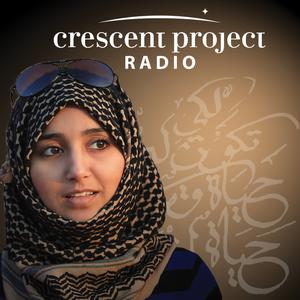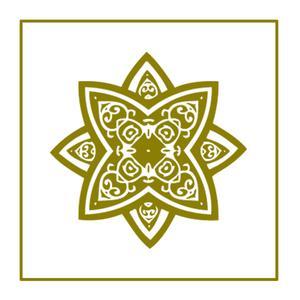
Let Us Reason - A Christian/Muslim Dialogue
Al Fadi
Let Us Reason exists to reach Muslims for Christ by utilizing theology, apologetics, and evangelism while comparing and contrasting Christian and Muslim doctrines. The host of Let Us Reason is Al Fadi, former Muslim from Saudi Arabia and the founder of CIRA International: The Center for Islamic Research and Awareness.
- 25 minutes503 | Scholars Criticism of Islam and Conclusions with Dr Jay Smith. Part 1
Al Fadi and Dr Jay continue there discussion from Shoemaker's book Creating the Quran. They name some scholars including Montgomery, Patricia Corona and others who point out that Mecca was insignificant and Medina (Yathrib was a small date oasis with few hundred people living there, and there is no mention of Jews living there as the S.I.N. mentions. They also say that most scholars conclude that the Quran and Islam is not from central Hijaz but from farther north.
See omnystudio.com/listener for privacy information.
1 February 2025, 7:00 am - 23 minutes502 | Did the Quran Come From the Hijaz Area of Saudi Arabia?
Al Fadi and Dr Jay Smith continue there review of Shoemaker book; creating the Quran. Today they focus on where was the origin of the Quran. They say that there was some rock inscription in Northern Arabian not in the Hijaz. Some of the reasons why the inscription doesn't fit the Hijazi dialect of central Arabia are three distinctive features: 1. The distinctive form of the relative pronoun. 2. The distinctive form of the distal demonstrative . 3. the use of the verbal constructive of ya aleph.
See omnystudio.com/listener for privacy information.
25 January 2025, 7:00 am - 25 minutes501 | What About Mecca? with Dr Jay Smith.
Muslims claim that Mecca is in Saudi Arabia, that Mohammad was born there, and that he also received his revelation of the Quran there. If that is true where is Mecca? Steven Shoemaker in his book Creating the Quran on page114 mentions that there is no mention of a mecca in any of the great civilizations of the time . Not only that,but another scholar; Patricia Corona said that there were no trade roues going through Mecca on land nor by the coast of the Red Sea bordering Mecca. Many scholars say that Islam started way north of Mecca and that most Muslim scholars were Persians. So Shoemaker concludes that Mecca was further north.
See omnystudio.com/listener for privacy information.
18 January 2025, 7:00 am - 25 minutes500 | The Tubingen Manuscript of the Quran with Dr. Jay Smith
This manuscript was found in Damascus and was moved to Germany. It looks a lot like the upper layer of the Sana manuscript. There are three reasons why this manuscript is 8th century and not 7th century: 1. The dots , the circles ,and the verse markings suggests that the text is a later text. 2. . The page layout and illuminations parallels the 8th century manuscripts. 3. The ornamentations suggests Abd Al Malik and Al Hajjag new distinctive Islamic Arabic manuscripts. The question is if this text came from Mecca and Medina, what was happening there? Scholars agree that in the 7th century those two cities where very isolated and insignificant.
See omnystudio.com/listener for privacy information.
11 January 2025, 7:00 am - 24 minutes499 | The Sana Manuscripts Comparison of Upper and Lower Layers
Dr Jay and Al Fadi continue the comparison between the upper and the lower layers of the Sana manuscripts of the Quran with the 1924 Hafs edition of the Quran. They point out differences that changes the meaning of the text; for example Sura 9: 9 in the lower layer of the manuscripts states" the way of Allah while the Hafs Quran of 1924 says 'His way". Another difference in the upper layer as an example is Sura 7: 76 "you directed vs he directed" They point out that most of the differences have to do with the diacritical marking which did not exist until the 8th century. Even with the upper layer of the manuscripts there was no standardized Quran yet.
See omnystudio.com/listener for privacy information.
4 January 2025, 7:00 am - 25 minutes498 | Discussing the Sana Manuscripts Using Asma Hilali's Book
- Dr Jay Smith discusses the book that Dr Asma Hilali wrote on the Sana Palimpsest manuscripts. He talks about the conclusions that she came up with by comparing it to todays Hafs Quran; she says that there are seventy variants in sixty three verses. She also believes that it is a student text. Jay says that that shuts down the idea of the preservation of the Quran which both Muslim and the Quran claim ( ie Sura 85: 21,22). Then Jay and Al discuss some of the differences as examples. Then they ask the question : Is the Quran perfectly preserved?
See omnystudio.com/listener for privacy information.
28 December 2024, 7:00 am - 24 minutes 30 seconds497 | Why the Sana Manuscripts is Considered a Palimpsest? Dr. Jay
The Sana manuscripts is a palimpsest manuscripts ; which means that there is a lower and upper layers of writing . Scholars say that the two writings are late seventh and early eighth century respectively. They think that it is two versions of the Quran; the first is a pre- standard Quran which was erased and rewritten as the canonical version. On comparing the two writing , it was found that there are seventy variants between the two. Dr Jay says that the lower text was erased because it needed to be updated.
See omnystudio.com/listener for privacy information.
21 December 2024, 7:00 am - 24 minutes496 | Carbon Dating and the Sana'a Manuscripts with Dr Jay Smith
The Sana'a manuscript was discovered in Yemen in 1975, it is very old with no dots and vowels. It is a palimpsest (It has two layers of writings). It had late 7th to 8th century scripts. It was carbon tested at the university of Arizona in 2007, and was dated to mid 7th century. The same segment was taken to four Europeans labs and they did not agree with the Arizona dating. Shoemaker concludes that there is a problem with the carbon dating because the process dates the skin of the animal not the time the writing was written
See omnystudio.com/listener for privacy information.
14 December 2024, 7:00 am - 25 minutes495 | Does Jesus and the Apostles Refer to Isaiah 53? Anthony Rogers
Al Fadi and Anthony Rogers continue their discussion of Isaiah 53. In this session they discuss how Jesus and His disciples talked about the fulfillment of Isaiah 53; 1. In Luke 24 after Jesus's resurrection ; he is explaining to the two disciples on the road to Emmaus how the Christ will suffer, die and come back to life. 2. All four accounts of the gospel mention Isaiah 40 a voice crying out in the wilderness . 3. Jesus told his disciples that he will go to Jerusalem to die. 4. Another example was in Acts 8 where Philip is explaining the suffering Messiah to the Ethiopian who was reading Isaiah 53.
See omnystudio.com/listener for privacy information.
7 December 2024, 7:00 am - 25 minutes494 | The Atonement and the Gospel in Isaiah 53 with Anthony Rogers
Al Fadi and Anthony Rogers continue in Isaiah 53 about the reason for the death of the righteous servant. It is atone for the guilt of the people (53:5,11). This is the gospel message in advance. The gospel is the good news; in Isaiah 40:9, 52:7. Is. 53:1 the gospel is proclaimed. The gospel of Mark starts as it is written in Isaiah. Zachariah 6:12 talks about the branch/ The Nazarene/ the Messiah.
See omnystudio.com/listener for privacy information.
30 November 2024, 7:00 am - 25 minutes493 | The Suffering Servant Relationship to God Incarnate with Anthony Rogers
Al Fadi and Anthony Rogers continue discussing Isaiah 52 and 53, They notice that this servant is an individual, a human, a man, not a nation. The pronoun "He" is being used many times. In Isaiah 52:13, This servant will be highly exalted. In Isaiah 2, the Lord alone will be exalted; This shows the divine identity of this figure. Isaiah 52: says that this upright man will suffer and die, buried , resurrected and exalted (Is. 52:13,14). He will be stricken, smitten , and afflicted (Is. 53:4) . He will be chastened, scourged , and crushed (Is. 53: 5). This figure will die for the sins of his people, and he will succeed. This person is the Lord Jesus.
See omnystudio.com/listener for privacy information.
23 November 2024, 7:00 am - More Episodes? Get the App
Your feedback is valuable to us. Should you encounter any bugs, glitches, lack of functionality or other problems, please email us on [email protected] or join Moon.FM Telegram Group where you can talk directly to the dev team who are happy to answer any queries.
 Muslims, Christians and the Zombie Apocalypse
Muslims, Christians and the Zombie Apocalypse
 Crescent Project Radio
Crescent Project Radio
 Engaging Missions
Engaging Missions
 Truth About Muslims / Muslims Christians and the Zombie Apocalypse
Truth About Muslims / Muslims Christians and the Zombie Apocalypse